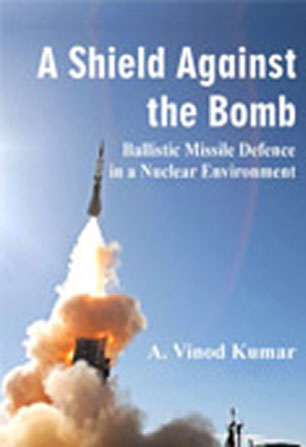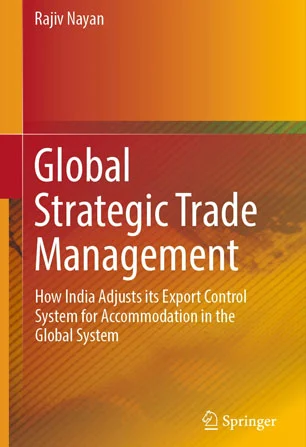India’s Deterrence and Disarmament: The Impact of Pokhran-II
After the nuclear weapons tests of May 11, 1998, Prime Minister Atal Bihari Vajpayee made a matter-of-fact statement:
“I have an announcement to make: today at 3:45 p.m., India conducted three underground nuclear tests in the Pokhran range…. These were contained explosions like the experiment conducted in May 1974….”
US–Soviet/Russian Dialogue on the Nuclear Weapons Programme of India
The history of the US–Soviet and US–Russian dialogues on the nuclear weapons programme of India can be divided into two major periods: First, from Pokhran I up to the end of the 1990s, when Moscow and Washington shared concerns regarding India’s nuclear programme, and even their bilateral disagreements in international affairs did not stop them from reaching a consensus on how to react to the 1974 nuclear test.
Nuclear India and the Global Nuclear Order
The 1998 nuclear tests conducted by India heralded yet another nuclear age. The instant response of a section of the international community was highly pessimistic. It foresaw regional instability, collapse of the global nuclear order and serious crisis in the global nuclear non-proliferation regime. As a result, overlooking India’s security imperatives, a number of countries reacted with hostility against the Indian nuclear tests. Even international organisations were mobilised against India.
Post-Pokhran II: Emerging Global Nuclear Order and India’s Nuclear Challenge
Post-Pokhran II the global nuclear environment has changed both in terms of developing niche technologies as also the nuclear strategies. Apart from the traditional challenges, there are new threats emerging in the form of cyber, space, hypersonic glide vehicles, nuclear terrorism, etc. The development of multiple nuclear dyads and triads further makes the security environment increasingly complex, as nations now have to deal with multiple nuclear problems and adversaries.
Military Dimensions of a Multipolar World: Implications for Global Governance
For a decade after the Cold War it seemed that multilateral governance might take root under US leadership, including a reinvigorated United Nations and a strengthened international legal framework. The nuclear explosive devices tested by India in 1998 took place in a pivotal period when the so-called ‘unipolar moment’ of the US began to be challenged by states that were not satisfied such an arrangement could advance their national interests.
Pokhran 20 Years After: Did the World Change?
Was the 1998 Pokhran test a historical watershed as many contemporary observers believed? This article looks at its impact on the nuclear non-proliferation regime, regional security, India’s position in global institutions, and the ongoing global power shift: the non-proliferation regime continued along the old dispute lines; regional conflict behaviour did not change at all; India grew into global institutions not because of nuclear tests but because of her remarkable economic development; the re-arrangement of global power follows more basic trends as well.
Walking Back Delusional Nuclear Policies
India’s ‘dual use’ nuclear policy has been strung out from the beginning between the peaceful atom and military atom as illustrated in Jawaharlal Nehru’s use of the phrase for the country’s nuclear energy programme—‘Janus-faced’. However, the Indian Government has been too influenced by its own rhetoric of peaceful use to equally emphasise the security aspects that the phrase implied.
Global Centre for Nuclear Energy Partnership: India’s Contribution to Strengthening Nuclear Security
In the 21st century, nuclear security (NS) risks are more tangible with the probability of nuclear weapons and materials falling into the hands of terrorists becoming more real. The NS threat scenario presents a complex matrix of violent terrorism, Islamist militancy, a proliferation network originating from Pakistan (A. Q. Khan Network) and its spread to Iran, Libya and North Korea. To mitigate nuclear risks and inspire global nuclear confidence, an institutionalized structure is critical for strengthening NS.
The Roadmap for India’s Nuclear Security
A watershed moment for nuclear security was reached when global leaders from more than 50 countries including India and other organisations met successively over six years (2010–2016) to develop an effective and sustainable plan for global nuclear security. At the end of six years, much has been accomplished to improve and upgrade nuclear security in several countries. Despite this perseverance, threats to nuclear security still remain undiminished, primarily because wrong people nursing a malicious agenda desire nuclear and radiological materials.
Special Editors’ Introduction
The 21st century is witnessing a renaissance of civil nuclear energy, particularly in Asia. At the same time, this century is also witnessing a rise in acts of terror, using newer and more lethal tools. The attacks on the United States on September 11, 2001 and other terror incidents have forced the international community to pay more serious attention to the possibility of terror groups using weapons of mass destruction (WMDs).








